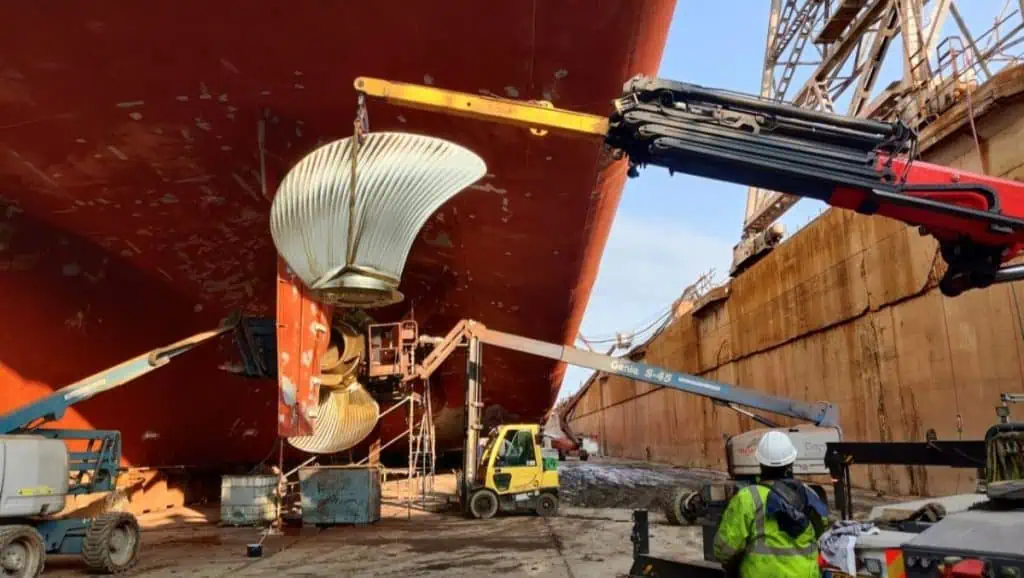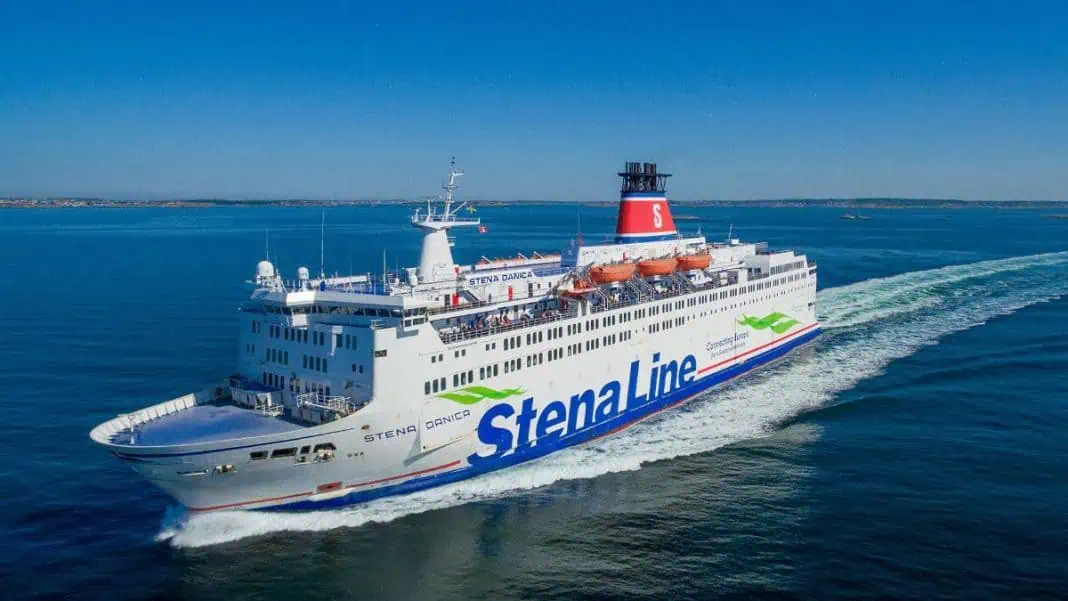Precision engineering from Berg Propulsion has secured a substantial reduction in fuel consumption for a long-serving Baltic ferry, after a propeller blade replacement the supplier says can fit with “any hub” which also met requirements to cut machinery vibrations.
Stena Danica entered service in 1983 but, having been fully renewed in 2005, remains a familiar feature of shortsea links Sweden and Denmark, connecting the ports of Gothenburg and Frederikshavn in just three hours and 30 minutes.
Last year, Stena Line asked Berg Propulsion to revise the 154.9m length ship’s twin propeller blades, with the aim of eliminating a persistent cavitation issue and enhancing fuel efficiency in a single project. In an additional technical challenge, Berg’s solution needed to be reverse engineered to fit with the existing propeller hub originally manufactured by another industry player.
“Stena continuously reviews the performance of its ships to evaluate whether machinery and systems on board are optimal for their actual operations,” said Per Wimby, Senior Naval Architect, STENA TEKNIK. “This is actually the third propeller blade replacement undertaken on Stena Danica over the years but this one is especially timely, given that it anticipates new regulatory requirements for all ships to demonstrate their energy efficiency.”
Stena Danica’s twin control pitch propellers are served by two Sulzer 12ZV40 medium speed engines per shaft. After several months of commercial operations in multiple sea states, Wimby confirmed that using the new propeller blades has reduced average fuel consumption while neutralising a longstanding issue with vibrations. ”It is a balance between efficiency and comfort onboard,” he said.
Victor Abrahamsson, After Market Business Development, Berg Propulsion, said that blade design had been optimized to reflect a planned reduction in operating speeds, in a compromise between one engine per shaft line running at full power or two engines running per shaft, without ‘overpitching’.
“Blade geometry has moved on quickly in recent years, based on more accurate calculations, 3D scanning and better modelling tools. Today, we make better use of materials so that the same or enhanced efficiencies are achieved using slimmer profiles and blades which cover less area. It’s also much easier to evaluate and predict the relative performance of different blade types.”
As one of the marine industry’s leading makers of propellers, thrusters and control systems, Berg’s insights on fuel efficiency build on experience plus investments in state-of-the-art design and manufacturing facilities, added Magnus Thorén, Energy & Efficiency Account Manager, Berg Propulsion.
“With fuel consumption so high on the agenda, we are putting all available tools at the disposal of our owner clients to secure the efficiencies they need,” said Thorén. “That means delivering tailor-made solutions for specific ship operating profiles, but this project also demonstrates what’s possible using the existing propeller hub: our designers and shipyard project teams could do this for any hub.”
“We would like to thank the whole Stena team for the very good cooperation to achieve the successful results for this project as per our joint efforts.” added Mattias Hansson, Global Account Manager, Berg Propulsion.













